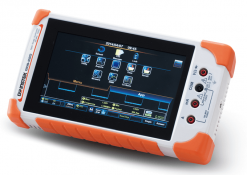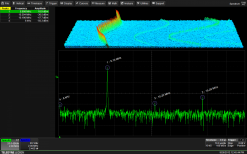Aktuelle Promotionen
Application Notes - Teledyne LeCroy
Hier finden Sie Application Notes, Technical Notes, White Papers, Fachartikel in Bezug zu Oszilloskopen von Teledyne LeCroy.
-
Tameq-Application Note-MAUI Studio Pro-WaveSurfer 3000-4000-Histogramm erstellen (D)

Diese TameqAppNote beschreibt schrittweise, wie eine mit dem WaveSurfer 3000/4000 Oszilloskop erfasste Kurve in MAUI Studio Pro imortiert und wie ein Histogramm erstellt wird.
-
Tameq-Application Note-MAUI Studio Pro-WaveSurfer 3000-4000-Rapport generieren (D)
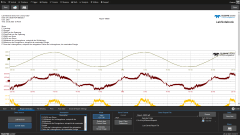
Diese TameqAppNote beschreibt schrittweise, wie eine mit dem WaveSurfer 3000/4000 Oszilloskop erfasste Kurve in MAUI Studio Pro imortiert und wie ein Rapport erstellt wird.
-
Tameq-Application Note-Oszilloskop-LabVIEW-Import Excel Waveform Time and Amplitude from File (D)

Diese TameqAppNote beschreibt wie in LabVIEW eine Teledyne LeCroy ASCII Waveform gespeichert im Excel-Format Time and Amplitude importiert und zeitlich korrekt skaliert werden kann.
-
Tameq-Application Note-Oszilloskop-LabVIEW-Teledyne LeCroy Binary Waveform Properties (D)
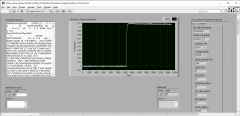
Diese TameqAppNote beschreibt wie in LabVIEW eine Teledyne LeCroy Binary Waveform gelesen werden kann und die umfassenden Eigenschaften der Kurve lädt.
-
Tameq-Application Note-Oszilloskop-WaveSurfer 3000-Erfasste Kurve mit dem integrierten Arbiträrgenerator abspielen (D)
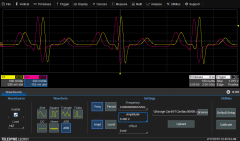
Diese TameqAppNote beschreibt schrittweise, wie eine mit dem Oszilloskop erfasste Kurve mit dem integrierten Arbiträrgenerator wiedergegeben werden kann.
-
Tameq-Application Note-Oszilloskop-WaveSurfer 3000-Zyklische Parameter-Mressungen mit WaveScan (D)

Diese TameqAppNote beschreibt schrittweise, wie zyklische Parameter-Messungen mithilfe vom Standard-Feature WaveScan durchgeführt werden können.
-
Teledyne LeCroy-Application Note-Oszilloskop-Analyzing Power Semiconductor Devices (E)
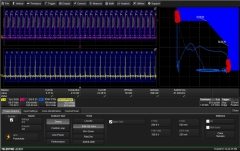
Power electronics systems require optimized design to minimize device switching, conduction, and off-state losses. Having tools that provide more insight into device losses provides the designer with more confidence in power electronics reliability under all operating conditions. Teledyne LeCroy's PWR software option provides an exceptional ability to measure and analyze the operating characteristics of power conversion devices and circuits. The software easily performs all aspects of device analysis such as device instantaneous power, switching losses, safe operating area (SOA), saturation voltage, dynamic on-resistance, dv/dt or di/dt, and saturation hysteresis curves of magnetic devices.
-
Teledyne LeCroy-Application Note-Oszilloskop-Follow The Bouncing Signal (E)

Signal jamming, noise generation/interference, signal interception, and other malicious RF-related activities have long been part and parcel of the electronic warfare arena. One countermeasure that is widely deployed is frequency hopping spread-spectrum (FHSS) transmission, or rapid and pseudo-random jumps of the carrier frequency in an effort to confound would-be jammers. FHSS transmission poses test and measurement challenges that we'll outline below.
-
Teledyne LeCroy-Application Note-Oszilloskop-Sequence Mode in WaveSurfer 10 Oscilloscopes (E)

There are often instances in which an oscilloscope user may need to capture a large number of fast pulses in quick succession, or, conversely, a small number of events separated by long periods. Either scenario can be challenging with typical oscilloscope acquisition modes. Sequence Mode, an acquisition mode that is part of the optional Advanced Debug Toolkit (ADT) for the WaveSurfer 10 oscilloscope, enables capture of fine details of complex event sequences occurring over long time intervals, while ignoring the intervals between events.
-
Teledyne LeCroy-Application Note-Oszilloskop-WaveScan in the WaveSurfer 10 Oscilloscope (E)

Teledyne LeCroy’s WaveSurfer 10 oscilloscope offers a large complement of powerful hardware triggers, but even the most advanced hardware triggers carry limitations in that they can find an event predetermined by the user. Thus, the WaveSurfer 10 oscilloscope is augmented with WaveScan Search and Find technology. WaveScan is an advanced search and analysis tool that provides the ability to quickly locate and characterize unusual events. WaveScan detects anomalies within a single capture and also operates in continuous scanning mode, constantly monitoring incoming waveforms. There are many search criteria to choose from, including non-monotonic edge detection, runt mode, and a large number of parametric measurement criteria, including rise time, fall time, frequency, pulse width, duty cycle, and many others. Teledyne LeCroy's PWR software option provides an exceptional ability to measure and analyze the operating characteristics of power conversion devices and circuits. The software easily performs all aspects of device analysis such as device instantaneous power, switching losses, safe operating area (SOA), saturation voltage, dynamic on-resistance, dv/dt or di/dt, and saturation hysteresis curves of magnetic devices.
-
Teledyne LeCroy-Application Note - Power-1 - The Fundamentals of Power Part I (E)

Ask any number of engineers to define "power" and you'll get any number of answers, and none of them would necessarily be wrong. Sometimes it's just a matter of perspective.
-
Teledyne LeCroy-Application Note - Power-2 - The Fundamentals of Power Part II (E)

Having reviewed a broad definition of power, how it is generated and distributed, and how motors consume almost half of all generated power, we will now turn to a more detailed discussion of just what it is that we call "power." When we discuss "power," we're typically referring to what comes out of a wall socket: AC line, or sinusoidal, power.
-
Teledyne LeCroy-Application Note - Power-3 - The Fundamentals of Power - Three-Phase Sinusoidal Voltages (E)
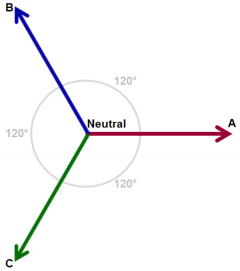
In a previous post, we briefly covered the basics of single- and three-phase AC power systems. Single-phase systems, as we've noted, comprise a single voltage vector with a magnitude (in VAC) and a phase angle. Of course, a three-phase voltage consists of three voltage vectors and three phase angles. This installment will go on to describe three-phase AC voltages in similarly brief fashion.
-
Teledyne LeCroy-Applikationsschrift - Power-1 - Grundlagen der Leistungselektronik Teil I (D)

Fragen Sie Ingenieure oder Techniker nach der Definition von Power oder elektrischer Leistung, so werden Sie ganz unterschiedliche Antworten erhalten. Die Beschreibungen sind nicht zwingend falsch, sondern oft eine Angelegenheit der Applikation und der Sichtweise.
-
Teledyne LeCroy-Applikationsschrift - Power-2 - Grundlagen der Leistungselektronik Teil II (D)

Nachdem wir eine breite Definition von Energie, wie sie erzeugt und verteilt wird und wie Motoren fast die Hälfte der gesamten erzeugten Energie verbrauchen, kommen wir nun zu einer detaillierteren Diskussion darüber, was es ist, was wir "Energie" nennen. Wenn wir über "Strom" sprechen, meinen wir typischerweise, was aus einer Steckdose kommt: Wechselstromleitung oder sinusförmige Leistung.
-
Teledyne LeCroy-Applikationsschrift - Power-3 - Grundlagen der Leistungselektronik Dreiphasige Sinus-Spannungen (D)

In Grundlagen der Leistungselektronik Teil II haben wir kurz die Grundlagen der ein- und dreiphasigen Wechselstromsysteme behandelt. Einphasen-Systeme bestehen, wie wir bereits erwähnt haben, aus einem einzigen Spannungsvektor mit einer Größe (in VAC) und einem Phasenwinkel. Natürlich besteht eine dreiphasige Spannung aus drei Spannungsvektoren und drei Phasenwinkeln. In dieser Ratenzahlung werden die dreiphasigen Wechselspannungen in ähnlich kurzer Form beschrieben.
-
Teledyne LeCroy - Note d'application - Puissance-1 - Les Fondamentales de la Puissance Part I (F)

Demandez à n'importe quel nombre d'ingénieurs de définir la "puissance" et vous obtiendrez n'importe quel nombre de réponses, et aucune d'entre elles ne serait nécessairement fausse. Parfois, c'est juste une question de perspective.
-
Teledyne LeCroy - Note d'application - Puissance-2 - Les Fondamentales de la Puissance Part II (F)

Après avoir passé en revue une définition large de l'énergie, la façon dont elle est produite et distribuée et la façon dont les moteurs consomment près de la moitié de toute l'énergie produite, nous allons maintenant passer à une discussion plus détaillée de ce que nous appelons l'" énergie ". Lorsque nous parlons d'" alimentation ", nous faisons généralement référence à ce qui sort d'une prise murale : Puissance de ligne AC, ou sinusoïdale.
-
Teledyne LeCroy - Note d'application - Puissance-3 - Les Fondamentales de la Puissance - Tensions sinusoïdales triphasées (F)

Dans Les Fondamentales de la Puissance Part II, nous avons brièvement couvert les principes de base des systèmes d'alimentation CA monophasés et triphasés. Les systèmes monophasés, comme nous l'avons noté, comprennent un vecteur de tension unique avec une amplitude (en VAC) et un angle de phase. Bien sûr, une tension triphasée se compose de trois vecteurs de tension et de trois angles de phase. Cet article décrira brièvement les tensions triphasées de la même façon.
Sind Sie auf der Suche nach Informationen zu Oszilloskopen von Teledyne LeCroy?
Bei Tameq haben wir Demo-Oszilloskope und viel Erfahrung beim Einsatz und der Programmierung von TL Oszilloskopen. Zögern Sie nicht uns zu kontaktieren, via Telefon, Email oder Kontaktformular.
Tameq Schweiz GmbH
Im Hof 19
CH-5420 Ehrendingen
Tel: +41 56 535 74 29
Fax: +41 56 535 94 97
Mob.: +41 78 704 56 51
Email: mail@tameq.ch

